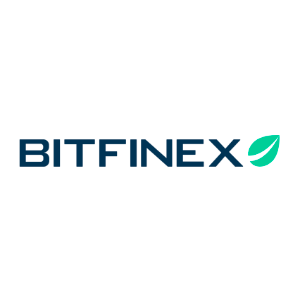Ethereum Price Prediction: Unleashing a Potential $10,000 ETH Surge
7 min read
BitcoinWorld Ethereum Price Prediction: Unleashing a Potential $10,000 ETH Surge The crypto world is buzzing with an audacious forecast: a potential $10,000 price tag for Ethereum (ETH) this bull cycle. This bold Ethereum Price Prediction comes from Eric Jackson, the founder of Toronto-based hedge fund EMJ Capital, and it’s certainly capturing attention across the market. Could ETH truly reach such heights, or is this just another speculative call? Jackson’s insights suggest a confluence of powerful factors could indeed propel Ethereum to unprecedented levels. Let’s dive into the core arguments fueling this optimistic outlook. Ethereum Price Prediction: Is a $10,000 ETH Surge Truly Attainable? Eric Jackson’s confidence in a $10,000 Ethereum Price Prediction isn’t merely based on market sentiment. According to CoinDesk, his analysis points to several fundamental shifts and upcoming events that he believes the market is significantly underestimating. For investors and enthusiasts alike, understanding these drivers is key to evaluating the potential trajectory of ETH. It’s a target that, if realized, would mark a substantial increase from current levels and solidify Ethereum’s position as a dominant force in the digital economy. Jackson highlights four primary catalysts that he believes will converge to create a powerful upward momentum for ETH: Ethereum Exchange-Traded Fund (ETF) Staking Approval: A major institutional gateway. Deflationary Token Economy Post-Merge: A fundamental supply-side shift. Increased Layer-2 Transaction Fees: Driving utility and ETH burn. Increased Tokenization of Real World Assets (RWAs): Expanding Ethereum’s utility into traditional finance. Each of these factors, individually strong, becomes even more potent when considered together, creating a compelling narrative for Ethereum’s future valuation. The Catalytic Impact of ETH ETF Approval: An Underestimated Force? One of the most anticipated events in the crypto space is the approval of an ETH ETF . While several spot Ethereum ETFs have recently been approved for trading in the U.S., Jackson’s focus is specifically on the prospect of an ETF with staking capabilities , which he anticipates by October of this year. This distinction is crucial. What does an ETH ETF , particularly one with staking, mean for Ethereum? Currently, investors who want to earn staking rewards on their ETH must hold the asset directly and participate in the staking mechanism, which can be complex for traditional institutional investors. An ETF with staking would: Simplify Access: Allow institutional and retail investors to gain exposure to ETH and its staking yield through traditional brokerage accounts. Increase Demand: Attract a massive wave of new capital from pension funds, endowments, and wealth managers who prefer regulated, easily tradable products. Reduce Supply Pressure: ETH acquired by the ETF for staking would be locked up, reducing the circulating supply available for sale on exchanges. Jackson argues that the market is currently underestimating the sheer volume of capital that could flow into Ethereum once such a product is available. The success of Bitcoin spot ETFs earlier this year provides a compelling precedent, demonstrating the significant demand from traditional finance for regulated crypto investment vehicles. The Power of Scarcity: Understanding Deflationary Ethereum Following its monumental shift to Proof-of-Stake (PoS) with The Merge, Ethereum underwent a significant change in its tokenomics, moving towards a Deflationary Ethereum model. This is a critical, often misunderstood, aspect of its value proposition. How does Ethereum become deflationary? The mechanism primarily involves two key components: EIP-1559 (London Hard Fork): Introduced a base fee for every transaction on the Ethereum network, which is burned (permanently removed from circulation) instead of going to miners. This means that a portion of every transaction fee effectively reduces the ETH supply. Proof-of-Stake (The Merge): Replaced energy-intensive mining with staking. Stakers are rewarded with newly minted ETH, but the amount of new ETH issued is significantly less than what was previously issued to miners. When network activity is high, the amount of ETH burned via EIP-1559 can exceed the new ETH issued through staking, leading to a net reduction in the total ETH supply. This dynamic creates a scenario where ETH can become a scarce asset, similar to how a commodity becomes more valuable as its supply diminishes while demand remains constant or grows. A truly Deflationary Ethereum , where more ETH is burned than created, means that each remaining ETH becomes inherently more valuable over time, assuming consistent network usage. Fueling Growth: How Layer-2 Scaling Boosts ETH Utility and Value The rapid expansion of Layer-2 Scaling solutions is another cornerstone of Jackson’s bullish thesis. Layer-2 networks, such as Arbitrum, Optimism, zkSync, and Polygon, are built on top of the Ethereum mainnet (Layer-1) to process transactions more efficiently and at lower costs. Why are Layer-2s so important for ETH’s value? Increased Network Throughput: Layer-2s alleviate congestion on the mainnet, allowing Ethereum to handle a much larger volume of transactions than it could alone. This scalability is vital for mass adoption. Lower Transaction Fees: By bundling many Layer-2 transactions into a single transaction on Layer-1, these solutions drastically reduce costs for users, making the Ethereum ecosystem more accessible and attractive for everyday use. Direct Contribution to ETH Burn: While transactions occur on Layer-2s, they periodically ‘settle’ or ‘batch’ their data back to the Layer-1 Ethereum blockchain. These settlement transactions incur fees on Layer-1, which are subject to EIP-1559 and thus contribute to the burning of ETH. More Layer-2 activity means more Layer-1 settlement, leading to more ETH burned. Ecosystem Growth: Robust Layer-2 Scaling fosters innovation and expands the range of applications built on Ethereum, from DeFi to NFTs and gaming, driving overall demand for the network’s native token. The growth of Layer-2s is a symbiotic relationship: they enhance Ethereum’s utility, and in turn, their increased usage contributes directly to the deflationary pressure on ETH. RWA Tokenization: Unlocking New Frontiers for Ethereum’s Dominance Perhaps one of the most transformative trends highlighted by Jackson is the burgeoning field of RWA Tokenization , or Real World Asset Tokenization. This involves converting rights to physical or tangible assets into digital tokens on a blockchain, with Ethereum emerging as a leading platform for this innovation. What does RWA Tokenization entail? Imagine owning a fractional share of a skyscraper, a piece of fine art, or a government bond, all represented by a token on the Ethereum blockchain. Examples include: Real Estate: Fractional ownership of properties, making illiquid assets more accessible and tradable. Bonds and Securities: Issuing digital bonds that offer faster settlement, increased transparency, and programmable features. Commodities: Tokenizing gold, silver, or other raw materials, simplifying their transfer and storage. Intellectual Property: Tokenizing music rights, patents, or copyrights. Why is Ethereum the blockchain of choice for RWAs? Security and Decentralization: Ethereum’s robust security and decentralized nature make it a trustworthy ledger for valuable assets. Smart Contract Capabilities: Its programmable smart contracts enable complex legal agreements and automated processes to be embedded directly into the tokens. Established Ecosystem: Ethereum boasts the largest developer community, extensive tooling, and a vast network effect, making it a reliable foundation for institutional-grade applications. The market for tokenized RWAs is projected to reach trillions of dollars in the coming years. As more traditional assets migrate onto the Ethereum blockchain, the demand for ETH (for gas fees, collateral, or even as a base layer for these new financial instruments) is expected to surge dramatically, cementing Ethereum’s role as the foundational layer for the future of finance. Challenges and Considerations for the Road Ahead While the arguments for a $10,000 ETH are compelling, it is crucial to acknowledge the inherent volatility and unpredictable nature of the cryptocurrency market. Several factors could influence Ethereum’s journey: Regulatory Environment: Evolving regulations worldwide could impact the adoption of ETFs, Layer-2s, and RWA tokenization. Macroeconomic Conditions: Broader economic downturns, interest rate changes, or geopolitical events can affect investor sentiment across all asset classes, including crypto. Competition: While Ethereum holds a dominant position, other Layer-1 blockchains continue to innovate and compete for market share. Technical Risks: Although Ethereum’s network is robust, any unforeseen technical issues or security vulnerabilities could impact confidence. Investors should always conduct thorough research and understand the risks associated with digital assets. This article provides analysis based on current information and expert opinion and should not be considered financial advice. Actionable Insights for Navigating Ethereum’s Potential Future For those looking to understand or participate in the Ethereum ecosystem, here are some actionable insights: Stay Informed: Keep abreast of developments regarding ETH ETF approvals, Layer-2 innovations, and major RWA tokenization projects. Understand the Fundamentals: Grasping concepts like deflationary tokenomics and the role of Layer-2s provides a clearer picture of Ethereum’s long-term value proposition. Consider Diversification: As with any investment, diversification across different assets can help mitigate risk. Risk Management: Only invest what you can afford to lose, and be prepared for significant price fluctuations inherent in the crypto market. Conclusion: Ethereum’s Path to New Heights? Eric Jackson’s $10,000 Ethereum Price Prediction is not just a bold statement; it’s a synthesis of powerful, interconnected trends shaping the future of digital finance. The potential approval of an ETH ETF with staking, coupled with the inherent scarcity of Deflationary Ethereum , the scalability offered by Layer-2 Scaling , and the transformative impact of RWA Tokenization , paints a compelling picture for Ethereum’s future. While the path ahead may be volatile, the fundamental drivers suggest that Ethereum is poised for a significant expansion of its utility and value. The coming months will be critical in determining if these catalysts can indeed unleash the projected surge and solidify Ethereum’s place as a cornerstone of the global economy. To learn more about the latest crypto market trends, explore our article on key developments shaping Ethereum price action and institutional adoption. This post Ethereum Price Prediction: Unleashing a Potential $10,000 ETH Surge first appeared on BitcoinWorld and is written by Editorial Team

Source: Bitcoin World



